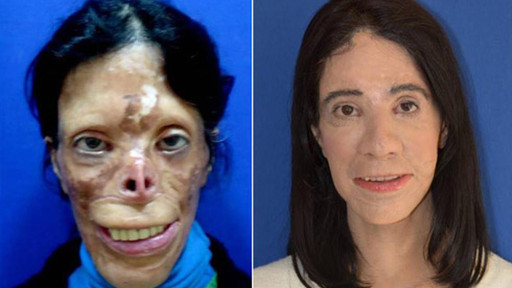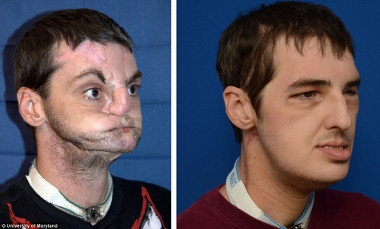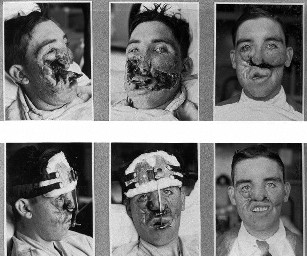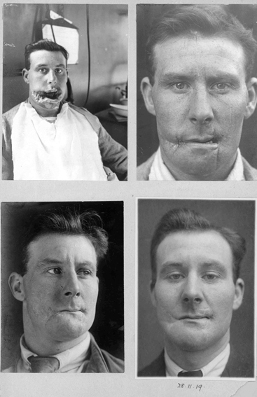I read a story today about a German woman, Martina Big and her current trip to the USA.
She is known as a ‘glamour’ model, and who am I to disagree. Actually I am going to disagree as the last time I looked up the word glamour it had to do with enticing, seductive, magical or enchanting. Sorry Martina, but you are as far away from that definition as it is possible to get, in fact you are down the other end of the scale in the frightful to the senses, repulsive zone.
Am I body shaming poor Martina? I guess I am and that seems to be a hideous crime in its own right if a lot of social comments are to be believed.
However, I won’t apologise because if this were her natural state I would keep quiet and silently send her my best wishes. She chose to do this to herself, not once but multiple time she has made a decision to continue down this path and when I look at her I think of Harold Gillies and that he must be spinning in his grave.

Of course it is her choice to do this to herself. It is her money and her body so if she wants to spend it to become whatever it is that she is trying to become, possibly a chocolate glazed doughnut, then it is up to her.
The right to hold the opinion that she looks utterly ridiculous is up to me.
No more ridiculous than the guy who wants to look like Ken, Barbie’s friend with no benefits given his injection moulded, anatomical shortcomings. He has reportedly spent almost $600,000 and had more than 50 major cosmetic procedures to look like an Idiot.
It would all be hilarious if young pseudo Ken wasn’t suffering from necrosis and is in the situation that, given the multiple operations that he has had on his nose, he has damaged his olfactory member beyond repair and has left it with an uncertain fate, but possibly it turning black and falling off are in his future.
All may not be lost for the budding action figure, Rodrigo Alves. If the worst happens maybe he can quickly change direction at that point and become Skeletor instead. Appearance fees could be similar, but just a different audience.


He would not be able to socialise, in their usual narcissistic, grandstanding way, with the numerous girls all desperately trying to be Barbie.
Some more desperate than others like the possibly psychologically challenged Pixi Fox who had six ribs removed to give herself the disproportionate waistline of her little plastic idol so she could be more like her.
Also, looking at her ‘after’ picture I don’t recall my daughters’ Barbies having lips like a pugnacious duck but possibly my memory is playing tricks on me.
If pushed I would have to imagine that each of these people and the many thousands of others who do similar things, some even worse, to themselves have mental health issues.
There are many reasons, legitimate, understandable reasons for people to have plastic surgery. There are a lot of surgeons out there doing some brilliant re-constructive and life altering surgery.
But what of the surgeons who carried out 10th, 20th or 30th unnecessary vanity operation on some of these people. What did the surgeon think when the budding Barbie wanted her ribs removed or Miss Big wanted help to turn herself into living, breathing facsimile of whatever the hell it is that she has become.
The Hippocratic Oath, which doesn’t, as often quoted, contain the phrase ‘First do no Harm’ does contain the phrase ‘I will utterly reject harm and mischief’ and an equivalent phrase from the Hippocratic School ‘…either help or do not harm the patient’.
I have to wonder if these surgeons ever considered this oath, or at least its ideals. The harm done by these repeated and completely unnecessary procedures is obvious.
Then at the other end of the scale we have surgeons who do some absolutely brilliant work, from rebuilding bodies of the broken, burned or diseased to making bodies for people born with defects and missing parts.
The difference between these two worlds is startling.
From the narcissistic, vacuous, celebrity at any cost end of the spectrum to unselfish, skilled artisans changing lives in positive and special ways.
Re-constructive surgery can be defined as the restoration of appearance and function following injury or disease, or the correction of congenital defects, using the techniques of plastic surgery.
Asiye Engiz was only a year old when a fire swept through her home. She was rescued in time to save her life but had suffered horrendous burns.
She spent the next 41 years in her house. No school, no social life, no self esteem, she never went out.
Her family took her to a procession of doctors who all said that nothing could be done until, finally she was seen by Dr. Mehmet Mutaf. He was the first doctor who thought that her face could be rebuilt.
This wasn’t a face transplant but a complete reconstruction using cartilage and bone taken from her ribs, hair from her head for her eyebrows, skin tissue from her arm, fat from her body to shape her face and finally skin from her neck to make skin on her face.
The results speak for themselves.


In a moment of drunken stupidity when he was 22 Richard Lee Norris managed to shoot himself in the face with a shotgun.
For the next 15 years he lived as a recluse in his home town, only going out at night with his face covered with a mask.
8 years ago he underwent a face transplant and now relies on anti rejection drugs but is thriving.
Two different people, two major re-constructive procedures but with one result, that their lives are an awful lot better than they were before.
Where does Harold Gillies come into this?
Harold Delf Gillies was a pioneering re-constructive surgeon treating the wounded from the First and Second World Wars. He joined Royal Army Medical Corps at the start of the First World War and was shocked by the injuries he saw in France and pushed the army set up their own plastic surgery unit.

Soon after, a specifically-designed hospital was opened which treated 2,000 patients after the Battle of the Somme alone.
Although Gillies was performing extraordinary work, facial reconstruction was initially viewed with suspicion but became an integral part of the post-war healing process.
One major issue for such invasive surgery was that this was in the time before antibiotics and the surgery was very risky.

The pioneering work of Gillies and other surgeons not only save countless hundreds of lives but allowed many terribly injured men to re-enter society and help them cope with the psychological injuries they had suffered.
He pushed the boundaries with his techniques and helped train new surgeons who took the skills even further through the Second World War.
All that work and all the selfless talent to see the popular media fixate on Miss Big and Miss Fox as some sort of poster for modern cosmetic surgery.

* There is an excellent film about the pioneering re-constructive surgery carried out during the First World War. La chambre des officiers (2001) which tells the story of a young officer badly wounded by a piece of shrapnel in the opening days of the war and spends the next five years having his face rebuilt.
Maybe too dark and melancholy for some it is nevertheless an excellent telling of the techniques used and the psychological issues the wounded suffered.


